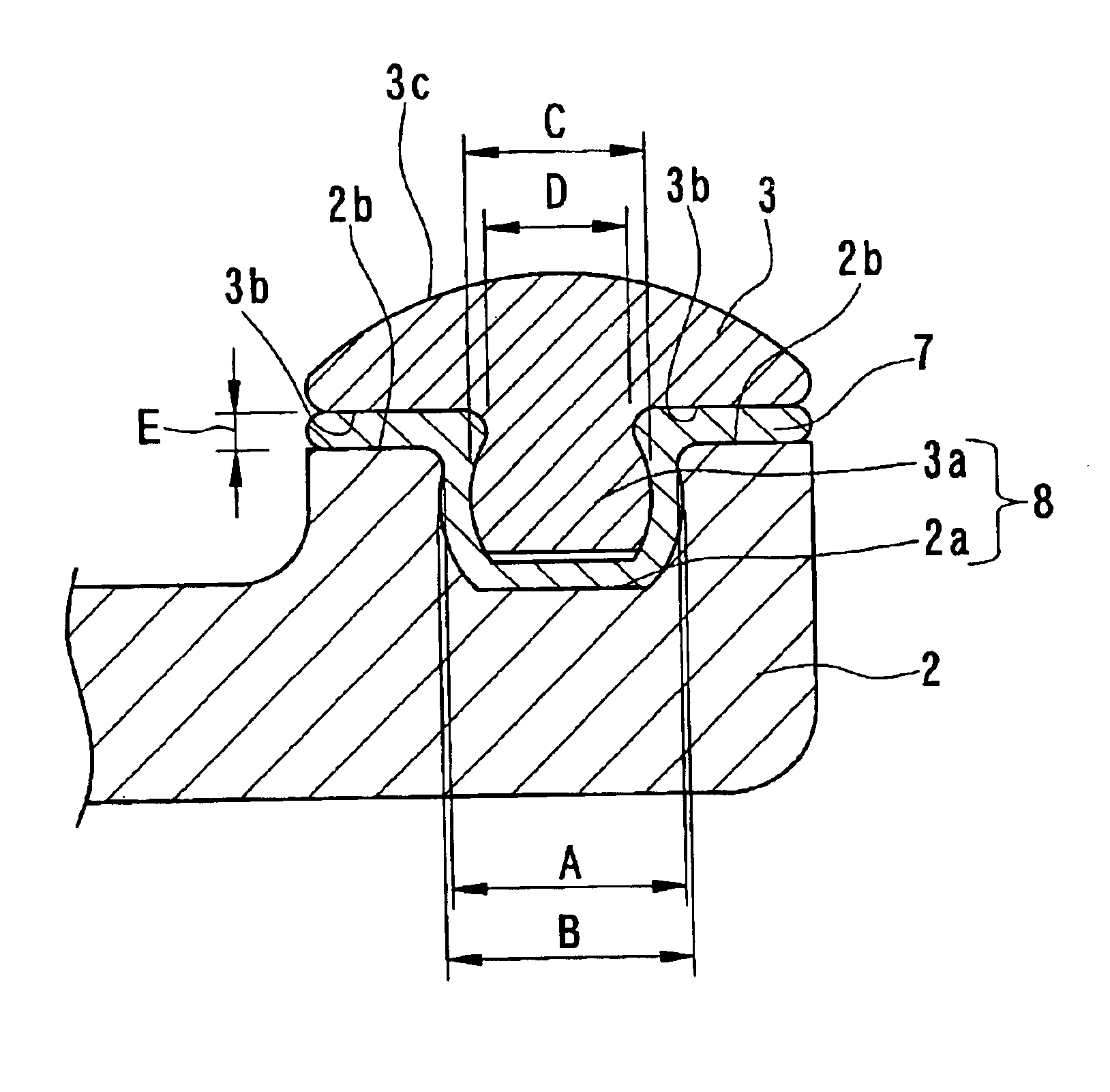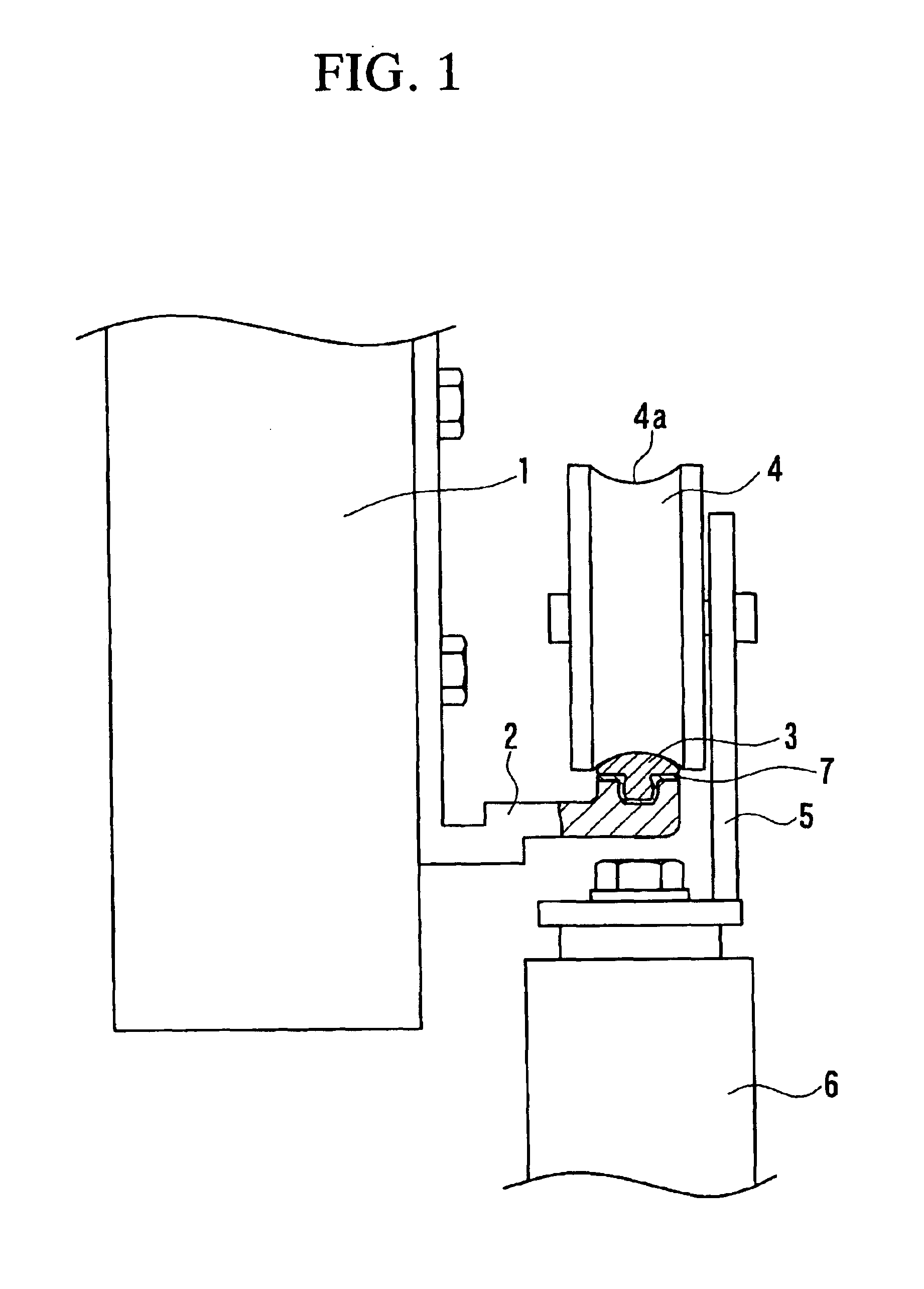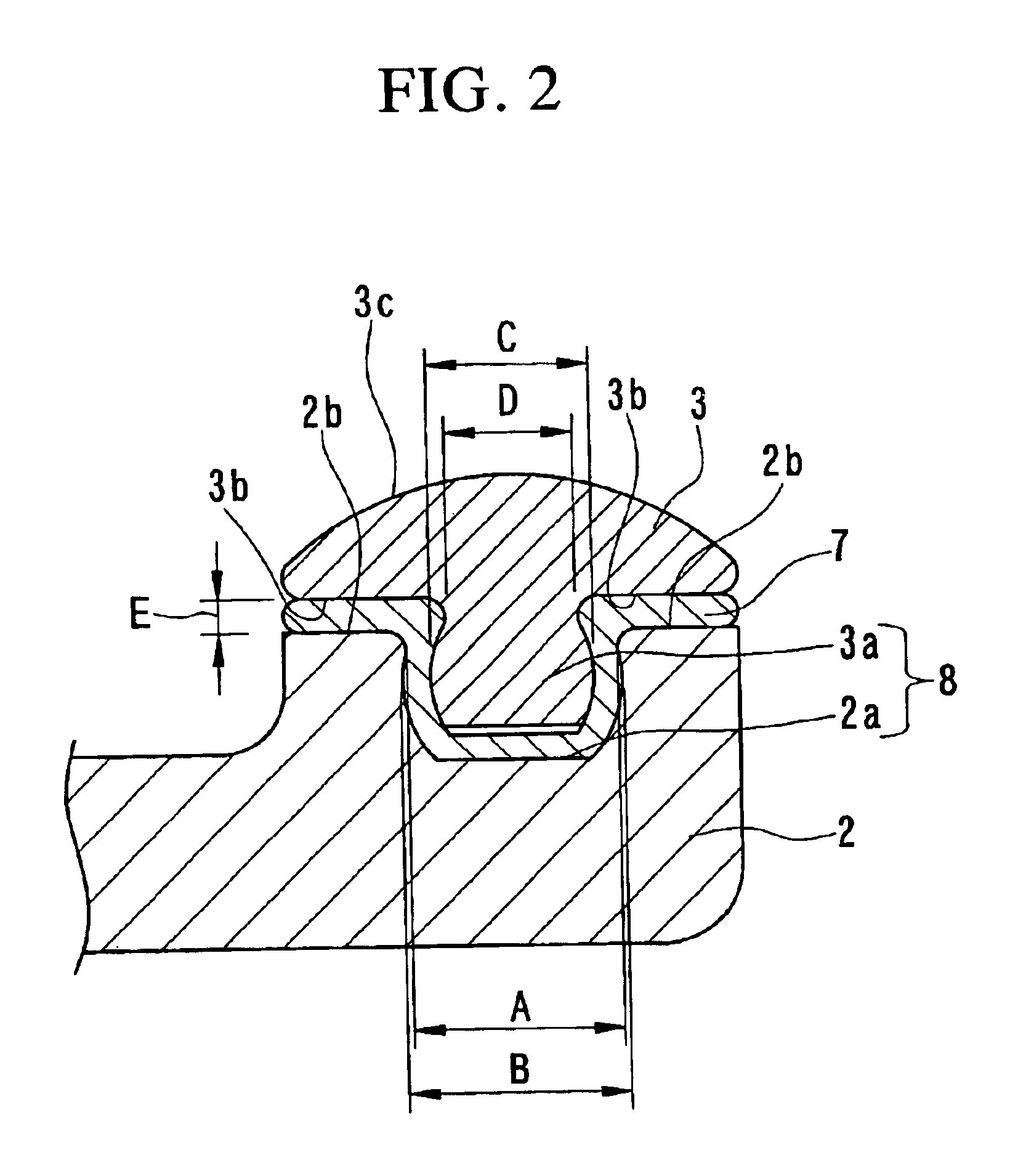Rail structure for the door
a rail structure and door technology, applied in the field of door rail structure, can solve the problems of large replacement task, inadequacies of doors with this type of rail structure, and high replacement cost, so as to avoid derailing of door wheels from the track rail body, and prevent the effect of derailing
- Summary
- Abstract
- Description
- Claims
- Application Information
AI Technical Summary
Benefits of technology
Problems solved by technology
Method used
Image
Examples
first embodiment
[0029]First preferred embodiment of the rail structure according to the present invention will be explained with reference to FIG. 1 and FIG. 2. FIG. 1 shows the state in which load support member 2 is installed on member of building side 1, the track rail body 3 is fit to this load support member 2, door wheels 4 are engaged onto the upper surface of this track rail body 3, door wheels 4 freely roll on the upper surface of this track rail body 3, and the door 6 is suspended from the door wheels 4 via brackets 5. Plural door wheels 4 are engaged with the track rail body 3 in the longitudinal direction of the track rail body 3, and door 6 is suspended from the track rail body 3 by these door wheels 4, and door 6 freely runs on the track rail body 3.
[0030]FIG. 2 is a partial enlarged cross section of FIG. 1, wherein cushion member 7 is placed between the load support member 2 and the track rail body 3. The cushion member 7 is a board-shaped material having an elastic component such as...
second embodiment
[0041]Next, the second preferred embodiment of the rail structure for doors according to the present invention will be explained with reference to the drawings FIG. 3 and FIG. 4. The fact that the rail structure of the second preferred embodiment differs from that of the first preferred embodiment is only in the shape of the wheels and the shape of the track rail body; other structures and the relationships of the dimensions of each part are the same as in the first preferred embodiment, and therefore, identical reference numerals are attached to the identical parts, and the explanation thereof is omitted.
[0042]The convexo-concave shape of an engaged part of the door wheels 4 of the door 6 and the track rail body 3 in the second preferred embodiment is in opposite relationship to the convexo-concave shape of the engaged part in the first preferred embodiment. To explain in more detail, while in the first preferred embodiment, the upper surface of the track rail body 3 is made to be ...
PUM
| Property | Measurement | Unit |
|---|---|---|
| width dimension | aaaaa | aaaaa |
| thickness dimension | aaaaa | aaaaa |
| hardness | aaaaa | aaaaa |
Abstract
Description
Claims
Application Information
 Login to View More
Login to View More - R&D
- Intellectual Property
- Life Sciences
- Materials
- Tech Scout
- Unparalleled Data Quality
- Higher Quality Content
- 60% Fewer Hallucinations
Browse by: Latest US Patents, China's latest patents, Technical Efficacy Thesaurus, Application Domain, Technology Topic, Popular Technical Reports.
© 2025 PatSnap. All rights reserved.Legal|Privacy policy|Modern Slavery Act Transparency Statement|Sitemap|About US| Contact US: help@patsnap.com



